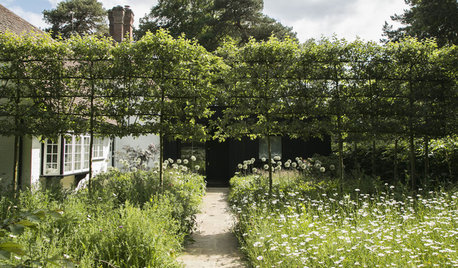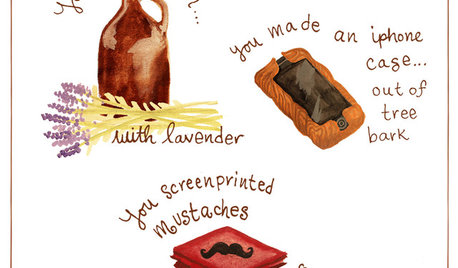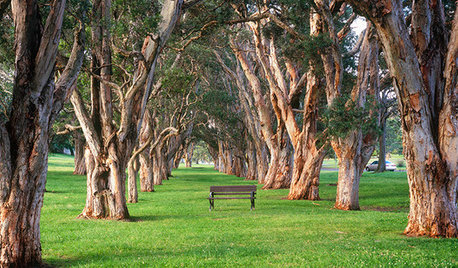apple tree bugs
federal_hill
14 years ago
Related Stories

EDIBLE GARDENSHow to Add an Apple Tree to Your Edible Garden
Readily available, beautiful and fragrant, apple trees offer four-season interest along with crisp, juicy fruit
Full Story
GARDENING AND LANDSCAPINGCrab Apple Trees Set Off a Stylish English Courtyard
A structure of pleached crab apple trees, bordered by a wildflower meadow, links a minimalist addition to an old house in Buckinghamshire
Full Story
GARDENING AND LANDSCAPINGPorch Life: Banish the Bugs
Don't let insects be the bane of your sweet tea and swing time. These screening and product ideas will help keep bugs at bay on the porch
Full Story
GARDENING AND LANDSCAPINGBid Bad Garden Bugs Goodbye and Usher In the Good
Give ants their marching orders and send mosquitoes moseying, while creating a garden that draws pollinators and helpful eaters
Full Story
GARDENING AND LANDSCAPINGBreezy and Bug-Free Modern Porches
Screening keeps pests out of these diverse porches across the U.S., while thoughtful designs keep them visually appealing
Full Story
DIY PROJECTS12 Signs You've Caught the DIY Bug
Been making inventive things from scratch? Repurposing salvaged pieces creatively? It may be more serious than you think
Full Story
EARTH DAYHow to Help Your Town’s Beneficial Birds and Bugs
Make a habitat using local materials to provide a home to the creatures that help our gardens
Full Story
EVENTSEnjoy Plantings, Eat Bugs and Learn at the Australian Garden Show
Indulge your senses at this four-day celebration of gardening, food and more in Sydney — and don't forget to try the crickets
Full Story
CONTEMPORARY HOMESHouzz Tour: Strong, Modern Lines Stand Up to the Trees
Modernism takes kindly to the New York woods, with double-height ceilings for openness and a burbling creek for music
Full Story
GARDENING AND LANDSCAPINGCrazy for Fruit Trees
Whether a single citrus or a mini apple orchard, even the smallest landscape space can bear deliriously delicious fruit
Full Story





greenpowermaniac
federal_hillOriginal Author
Related Professionals
Holly Springs Landscape Architects & Landscape Designers · Edmond Landscape Architects & Landscape Designers · Citrus Heights Landscape Architects & Landscape Designers · Birmingham Landscape Architects & Landscape Designers · Jennings Landscape Architects & Landscape Designers · Kenmore Landscape Architects & Landscape Designers · Rancho Palos Verdes Landscape Architects & Landscape Designers · River Forest Landscape Architects & Landscape Designers · Crystal Landscape Contractors · Ramsey Landscape Contractors · Reedley Landscape Contractors · Smyrna Landscape Contractors · Vermilion Landscape Contractors · Wayland Landscape Contractors · Irvington Landscape Contractorsfederal_hillOriginal Author
jean001
federal_hillOriginal Author
jean001
federal_hillOriginal Author
alan haigh
federal_hillOriginal Author
alan haigh
applenut_gw
federal_hillOriginal Author
glenn_russell
Scott F Smith